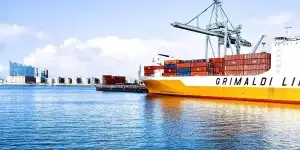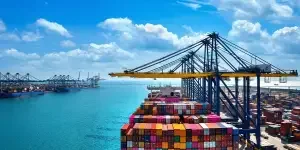Air
Iran Airspace Avoidance
The escalating conflict involving missile and drone attacks originating from Iran has compelled a multitude of airlines to alter their usual flight paths, thereby steering clear of Iranian airspace. This decision has led to increased traffic and higher costs on alternative routes, especially impacting the airfreight between Asia and Europe. Additionally, the redirection has intensified issues at major transit hubs and has resulted in the suspension of some air services to Israel due to safety concerns. Logistics companies are now facing challenges in maintaining timely sea-air connections through pivotal points such as the Strait of Hormuz.
Struggles at US Cargo Hubs
Despite a challenging year, in 2023 Hong Kong International Airport successfully retained its status as the world’s busiest cargo hub, with a notable increase in cargo volume. In stark contrast, major US cargo hubs such as Memphis, Anchorage, Louisville, and Los Angeles reported some of the most significant declines. These downturns have been primarily driven by a decrease in operations by major logistics companies like FedEx and UPS, which responded to a fall in parcel demand amidst broader geopolitical tensions and supply chain disruptions. This situation underscores the sensitivity of global cargo movements to international economic climates.
Ocean
Container DataSharing Initiatives
In an effort to tackle persistent inefficiencies within the container shipping sector, the Federal Maritime Commission (FMC) is actively pursuing new regulations that would require more robust data sharing among stakeholders. This regulatory push, motivated by the substantial congestion and heightened fees experienced during pandemic induced disruptions, aims to enhance transparency and operational efficiency across ports and shipping lines.
Panama Canal Adjustments
The Panama Canal faces operational challenges due to unusually low rainfall and the impacts of the El Niño phenomenon, which have led to critical water shortages affecting transit schedules. The Canal Authority is implementing contingency measures and anticipates some relief with the upcoming rainy season, which is expected to help in normalizing operations by 2025. Furthermore, the authority is planning infrastructure upgrades to boost the canal’s capacity and ensure its ability to meet both navigational and regional water demands.
Land
Flat Freight Metrics in March
The transportation sector saw no significant change in freight metrics this March, echoing the stagnant performance noted in February, as per the Cass Freight Index. The industry continues to grapple with pressures on shipping rates due to an oversupply of trucking capacity coupled with a subdued demand in the industrial production sector. These conditions suggest a cautious outlook for freight movements in the near term.
Supply Chain
Rise in US Import Volumes
Despite facing multiple global trade disruptions, including notable incidents like the suspension of vessel traffic at the Port of Baltimore and operational challenges at the Panama Canal, US import volumes are showing remarkable resilience. According to the National Retail Federation and Hackett Associates’ latest Global Port Tracker report, major US ports are projected to handle around 2 million TEUs in May, marking a significant year over year increase. This resilience is largely attributed to proactive adjustments by supply chain managers who have adeptly navigated through the disruptions to maintain steady supply chain flows.
Disclaimer: All information and views in this post are provided for reference purposes only and do not constitute any investment or purchase advice. The information quoted in this report is from public market documents and may be subject to change. Alibaba.com makes no warranties or guarantees for the accuracy or integrity of the information above.

Looking for a logistics solution with competitive pricing, full visibility, and readily accessible customer support? Check out the Alibaba.com Logistics Marketplace today.




